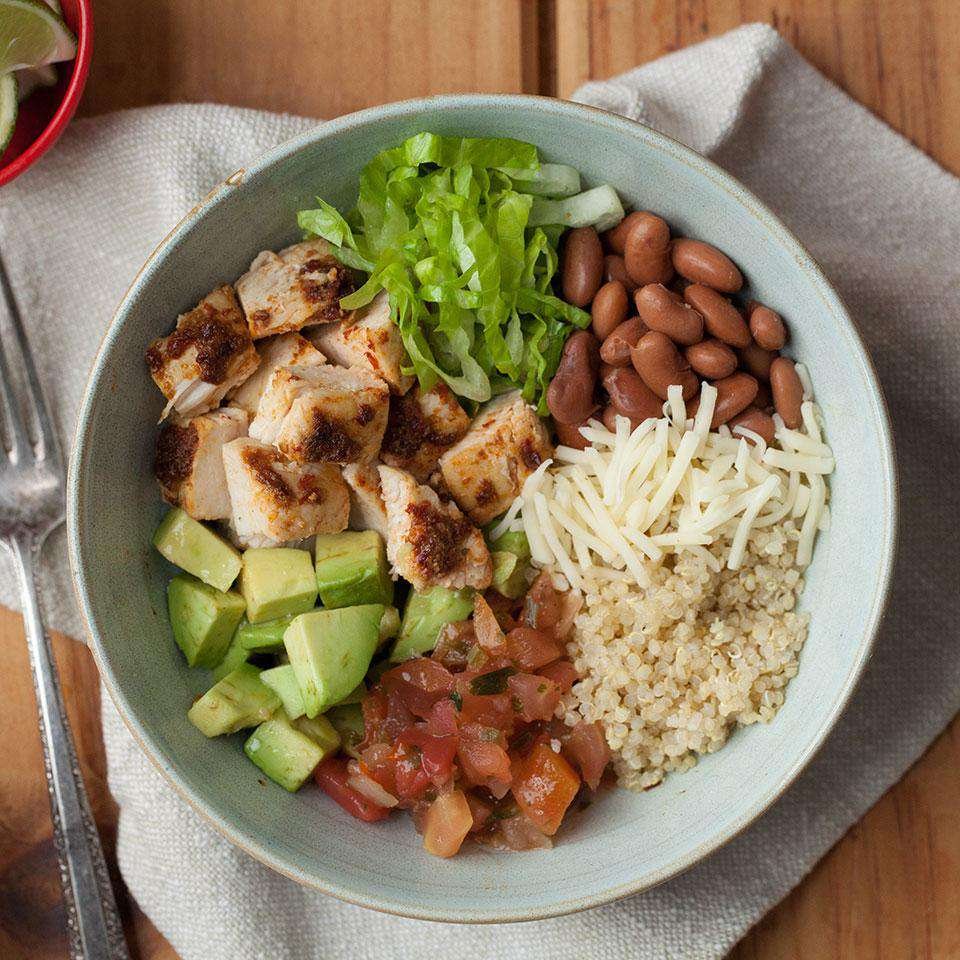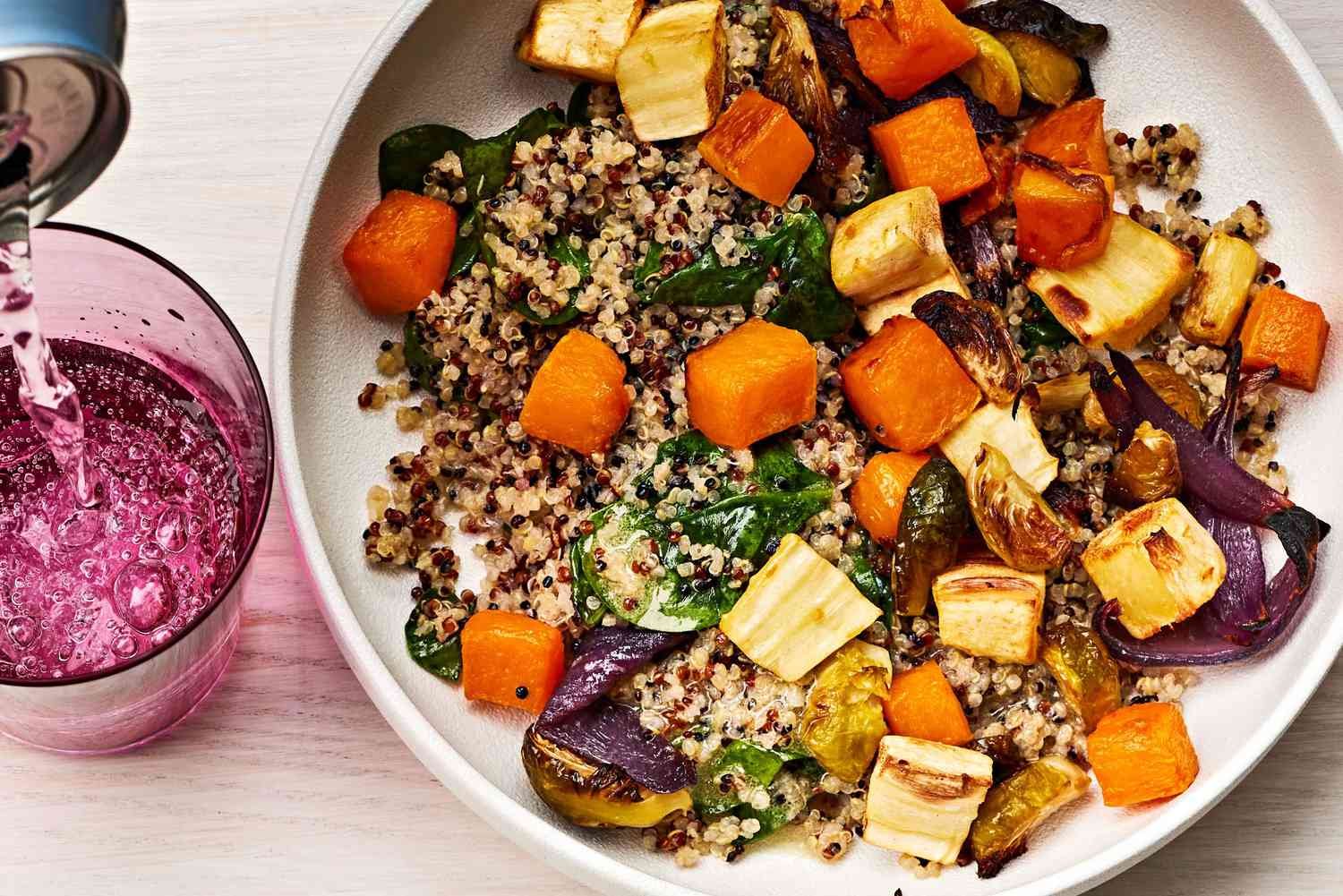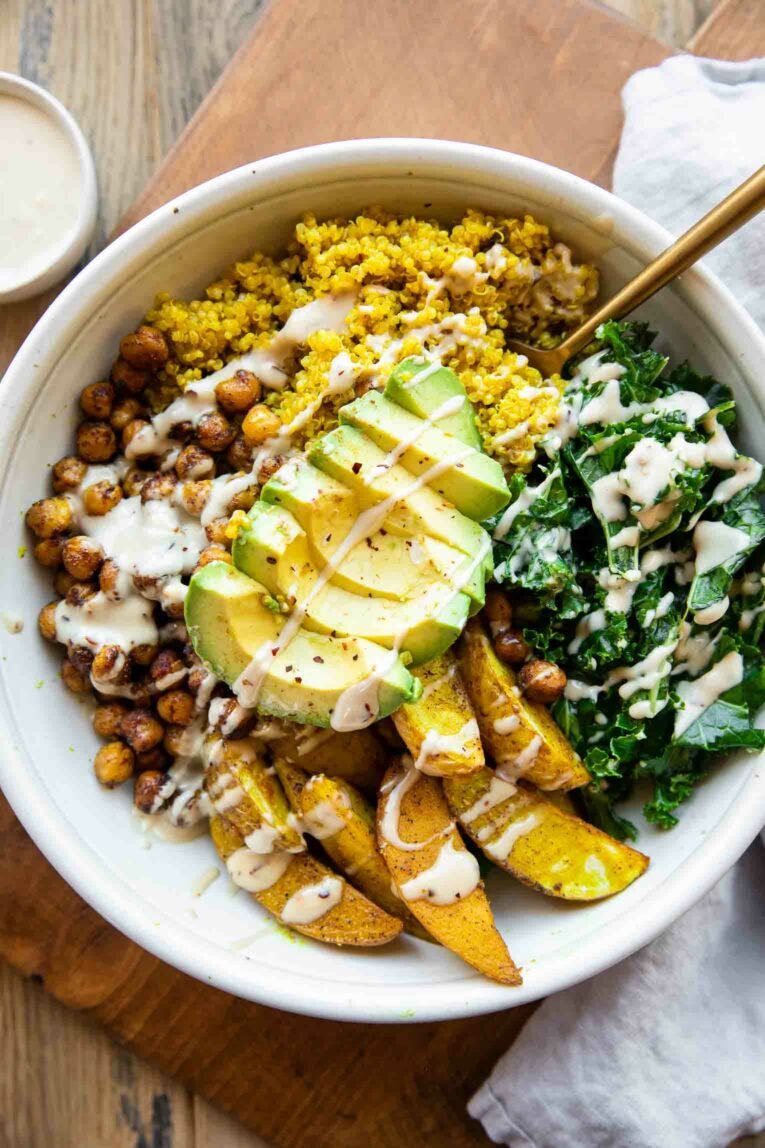Imagine finishing your day with a meal that’s both satisfying and guilt-free. Low-fat healthy dinners are not just for those on a strict diet—they’re for anyone who wants to feel good about what they’re eating.
You might think healthy means bland or boring, but let’s flip that script. What if you could enjoy delicious meals that are light on fat but heavy on flavor? You’ll discover how easy it is to whip up dinners that are nourishing and delightful.
Get ready to explore meals that won’t weigh you down but will lift your spirits, and keep you coming back for more. Curious about how you can transform your dinner routine and feel great about it? Keep reading to find out!
Benefits Of Low Fat Meals
Choosing low fat meals for dinner is more than just a healthy habit—it’s a lifestyle choice that offers numerous benefits. These meals are not only delicious but also support your body in multiple ways. By focusing on low fat options, you can enhance your health and well-being in surprising ways.
Improved Heart Health
Eating low fat meals can significantly improve your heart health. These meals help reduce the risk of heart disease by lowering cholesterol levels. It’s amazing how a simple switch in your dinner choices can lead to a healthier heart.
Imagine the peace of mind knowing that your meals are working to keep your heart strong. You don’t have to sacrifice taste; there are countless flavorful options that are heart-friendly.
Weight Management
Low fat meals are an effective tool for weight management. They allow you to enjoy a satisfying dinner without worrying about excess calories. When you choose meals with less fat, you naturally consume fewer calories, making it easier to maintain a healthy weight.
Consider how a plate of grilled chicken with steamed veggies can fill you up without filling you out. It’s all about making smart choices that support your goals.
Enhanced Digestion
Low fat meals can lead to enhanced digestion. High-fat foods can be harder for your body to process, sometimes causing discomfort. By choosing low fat options, you give your digestive system a break, allowing it to function more smoothly.
How often do you feel bloated after a heavy, fatty meal? Switching to lighter, low fat dinners can make you feel better and more energized.
Next time you’re planning dinner, think about the benefits of going low fat. What will you choose to improve your health tonight?
:max_bytes(150000):strip_icc()/easy-shrimp-scampi-with-zucchini-noodles-f68bce3c61ee402583cea2545d4a3145.jpeg)
Credit: www.eatingwell.com
Planning A Healthy Dinner
Planning a healthy dinner doesn’t have to be complex. It’s about choosing nutritious ingredients and creating meals that satisfy. A well-balanced dinner supports your health goals. It can help manage weight and improve energy levels. Let’s explore how to plan a nutritious dinner with low fat options.
Balancing Macronutrients
Macronutrients are essential in every meal. They include carbohydrates, proteins, and fats. Balance these elements for a complete dinner. Carbohydrates provide energy. Choose whole grains like brown rice or quinoa. They offer fiber and nutrients. Healthy fats are vital too. Include sources like avocados or olive oil. They support heart health. Protein is crucial for muscle repair. It also keeps you full longer. Ensure each meal has a good mix of these nutrients.
Incorporating Vegetables
Vegetables should be a major part of your dinner. They are rich in vitamins and minerals. Leafy greens like spinach or kale are great choices. They are low in calories but high in nutrients. Colorful vegetables add variety and health benefits. Think bell peppers, carrots, and broccoli. These are packed with antioxidants. Steaming or grilling vegetables retains their nutrients. Try to fill half your plate with vegetables. This ensures a nutrient-rich meal.
Choosing Lean Proteins
Lean proteins are key to a healthy dinner. They provide necessary amino acids without extra fat. Chicken breast, turkey, and fish are excellent choices. They are low in saturated fats. Fish like salmon or trout offer omega-3 fatty acids. These are good for heart health. Plant-based proteins like beans and lentils are also beneficial. They provide fiber and are low in fat. Opt for lean proteins to keep your meals healthy and satisfying.
Low Fat Cooking Techniques
Cooking low-fat meals can be both delicious and simple. By using the right techniques, you can enjoy flavorful dinners without extra calories. These methods help retain nutrients and enhance taste. Explore various ways to prepare your meals healthily.
Grilling And Baking
Grilling enhances flavor without adding fat. It allows excess fat to drip away. Use lean meats and vegetables. Baking is another healthy choice. It requires no extra oil. You can bake fish, chicken, or veggies. This method locks in moisture and flavor.
Steaming And Poaching
Steaming preserves nutrients in food. It uses steam to cook. Vegetables and fish work well with this method. Poaching is cooking in liquid at low heat. It keeps food tender and moist. Use broth or water for poaching. This technique is gentle on proteins.
Using Herbs And Spices
Herbs and spices add flavor without fat. Fresh basil, rosemary, and thyme are great choices. Spices like cumin and paprika enhance taste. These ingredients make meals exciting. Experiment with different combinations. Your dinners will be both tasty and healthy.
Delicious Recipes
Explore a world of delicious recipes with low-fat healthy meals for dinner. Enjoy satisfying dishes that keep calories in check. Perfect for those wanting to eat healthier without sacrificing taste.
Are you ready to transform your dinner table into a haven of healthy, low-fat meals? Sometimes, the quest for tasty yet nutritious options can seem daunting. However, with the right recipes, you can enjoy meals that are both satisfying and health-conscious. Here, I’ll share some of my favorite low-fat dinner recipes that not only keep the calories in check but also delight your taste buds. ###Vegetable Stir-fry
A vegetable stir-fry is a quick and vibrant dish that bursts with flavors. It’s a personal favorite after a long day when I crave something fast yet fulfilling. Start with a medley of your favorite vegetables like bell peppers, broccoli, and carrots. Toss them in a hot pan with a splash of soy sauce and a hint of garlic. In just ten minutes, you have a delicious meal ready to serve. You can even mix in some tofu for added protein. This dish is not only low in fat but also high in nutrients. ###Grilled Chicken Salad
Grilled chicken salad is a classic that never fails to impress. It’s refreshing, light, and perfect for those warm evenings when you desire something cool and filling. Begin by marinating chicken breasts in a simple mix of lemon juice, olive oil, and herbs. Grill them until they’re perfectly cooked with a slight char. Serve the chicken over a bed of mixed greens, cherry tomatoes, and cucumbers. Top it off with a light vinaigrette. This salad provides lean protein and a burst of freshness in every bite. ###Quinoa And Black Bean Bowl
Quinoa and black bean bowls are a powerhouse of nutrition. They are hearty, satisfying, and incredibly easy to put together. Cook quinoa and mix it with black beans, corn, and diced tomatoes. Add a dash of lime juice and a sprinkle of cilantro for a zesty kick. This meal is perfect for meal prep too. Make a big batch and enjoy it throughout the week. It’s a delicious way to get your fiber and protein in one bowl. Which of these recipes will you try first? Each one promises not just a meal, but an experience that celebrates health and flavor. Whether you’re cooking for yourself or for family, these options are sure to please. Enjoy the journey of discovering new tastes and textures while keeping your dinner healthy and low-fat.Tips For Flavorful Low Fat Meals
Discover flavorful low fat meals by using fresh herbs and spices for dinner. Opt for lean proteins like chicken or fish, paired with vibrant vegetables. Experiment with cooking methods such as grilling or steaming to keep meals healthy and delicious.
Eating low fat doesn’t mean sacrificing flavor. If you’re looking to make your dinners healthy yet satisfying, there are plenty of tricks to elevate your meals. Discover how a few creative tweaks can transform your low fat dishes into a culinary delight. Let’s dive into some practical tips to amp up the taste without adding extra calories.Experimenting With Seasonings
Using a variety of seasonings can be a game-changer. Think beyond salt and pepper. Try herbs like basil, rosemary, or thyme to add a fresh taste. Spices like cumin, paprika, and turmeric can bring warmth and depth to your meals. Have you ever tried smoked paprika on roasted vegetables? It adds a rich, smoky flavor that might just become your new favorite.Utilizing Citrus And Vinegars
Citrus fruits and vinegars are your best friends for adding zing. A squeeze of lemon or lime can brighten up a dish instantly. It’s like giving your meal a refreshing lift. Different vinegars, such as balsamic, apple cider, or red wine, can offer unique flavors. Drizzle a bit over salads or roasted veggies to enhance their taste without extra fat.Adding Texture And Variety
Texture can make a meal more interesting. Think about adding crunchy elements like sliced almonds or toasted seeds. Incorporate a mix of cooked and raw veggies for varied textures. A combination of tender and crisp can make each bite exciting. How often do you mix grains like quinoa or barley with your vegetables? It adds a hearty texture that feels satisfying and full of variety. Experimenting with these ideas could be the key to enjoying your low fat meals. It’s about finding the right balance and discovering what makes your taste buds dance. What will you try first?Shopping For Ingredients
Shopping for ingredients is a crucial step in preparing low-fat healthy meals for dinner. It sets the foundation for a delicious and nutritious meal that you can enjoy with your family. Are you ready to transform your dinner routine into a healthier experience?
Selecting Fresh Produce
Fresh produce is the heart of any healthy meal. When you head to the grocery store, make a beeline for the fresh produce aisle. Look for vibrant colors and firm textures in fruits and vegetables; these are signs of freshness and quality. Ever noticed how a ripe tomato feels slightly firm but gives a little under gentle pressure? That’s what you should aim for! Consider seasonal produce for better taste and cost savings. What’s your favorite vegetable to cook with?
Choosing Healthy Fats
Not all fats are bad for you. The key is to choose healthy fats that nourish your body. Opt for options like olive oil, nuts, and avocados. These fats add richness to your meals without the guilt. Remember the time you used avocado in a salad and it transformed the dish into something luxurious? That’s the power of healthy fats. Keep an eye out for products labeled as low-fat or fat-free as they often substitute sugar or artificial ingredients to maintain flavor. What’s your go-to healthy fat?
Avoiding Processed Foods
Processed foods can be detrimental to your health goals. They often contain high amounts of sodium, sugar, and unhealthy fats. When shopping, scrutinize labels and opt for whole foods that are less processed. Think about the last time you chose whole-grain bread over white bread; the flavor and nutrition difference was worth it, right? Homemade meals with fresh ingredients beat packaged ones every time. Have you tried making your own salad dressing instead of buying one?
Meal Preparation Strategies
Preparing healthy, low-fat meals for dinner doesn’t have to be complicated. With the right strategies, you can enjoy nutritious meals every night. Efficient meal preparation saves time and boosts your commitment to healthy eating. Explore these strategies to simplify your cooking routine and maintain a balanced diet.
Batch Cooking
Batch cooking is a smart way to manage your time. Cook large portions of healthy meals in one go. This reduces daily cooking stress. Choose recipes that store well. Soups, stews, and roasted vegetables are great options. Prepare these dishes on weekends to enjoy throughout the week.
Portion Control
Controlling portion sizes is key to a balanced diet. Use measuring cups to serve correct portions. This prevents overeating and helps maintain your weight. Divide meals into single servings before storing. This way, you eat just the right amount every time.
Storage And Reheating
Proper storage keeps your meals fresh. Use airtight containers to preserve flavor and texture. Label containers with dates to monitor freshness. Reheat meals evenly to retain nutrients. Use the microwave or stovetop for best results. Stir occasionally to ensure even heating.

Credit: www.bbcgoodfood.com

Credit: www.goodhousekeeping.com
Frequently Asked Questions
What Are Some Good Low-fat Dinners?
Try grilled chicken with steamed vegetables for a healthy dinner. Enjoy a quinoa salad with fresh herbs. Opt for baked fish with lemon and asparagus. Whip up a veggie stir-fry with tofu. These meals are nutritious and low in fat, perfect for a balanced diet.
What Is The Healthiest Low-fat Meal?
Grilled chicken with steamed vegetables is a healthy low-fat meal. Quinoa adds protein and fiber, enhancing nutritional value. Opt for olive oil and lemon juice for flavor. This combination offers essential nutrients while keeping fat content minimal. Ideal for weight management and overall health.
What Is Best Dinner For Fat Loss?
The best dinner for fat loss includes lean proteins like chicken or fish, vegetables, and whole grains. Focus on portion control and avoid processed foods. Opt for grilled, baked, or steamed cooking methods to reduce added fats. Drink water or herbal tea to stay hydrated and support metabolism.
What Is The Healthiest Meal To Eat For Dinner?
A balanced dinner includes lean protein, whole grains, and plenty of vegetables. Choose grilled chicken, quinoa, and steamed broccoli. Add a small salad with olive oil dressing. Drink water or herbal tea. This meal supports digestion, provides essential nutrients, and keeps you full.
Customize based on dietary needs or preferences.
Conclusion
Healthy dinners can be both tasty and low in fat. Simple swaps make meals lighter. Grilled chicken, fish, or tofu are great options. Add vegetables for extra nutrients. Use herbs and spices for flavor without calories. Whole grains like brown rice add fiber.
A balanced plate keeps you full and satisfied. Enjoy these meals without guilt. Eating well doesn’t mean giving up flavor. Try new recipes and find favorites. Small changes lead to healthier habits. Keep your dinner healthy and feel great.






